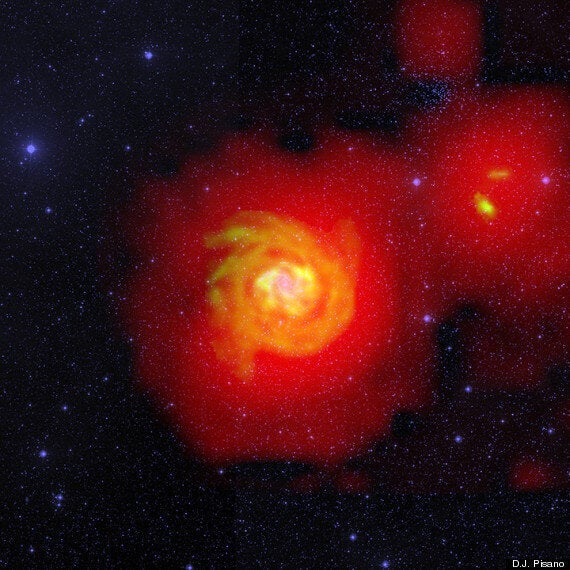Astronomers have discovered what appears to be a vast 'river' of hydrogen in deep space.
The massive 'field' of diffuse gas is thought to act as a 'bridge' between galaxies, closing the gap in the otherwise empty wastes of inter-galactic space.
The team from West Virginia University discovered the river of hydrogen streaming into a galaxy named NGC 6946 using the National Science Foundation's Robert C. Byrd Green Bank Telescope.

Above: The galaxy (left) in yellow, the cloud of hydrogen in red, and the cloud it is 'feeding' off (right)
They said that the very faint 'filament' of gas could help explain why spiral galaxies are able to keep up a steady rate of star formation. This particular galaxy - located about 22 million light-years from us - has a faster rate of star generation that our own Milky Way, but until now nobody has known why.
"We knew that the fuel for star formation had to come from somewhere. So far, however, we've detected only about 10 percent of what would be necessary to explain what we observe in many galaxies," said astronomer D.J. Pisano to Phys.org.
"A leading theory is that rivers of hydrogen – known as cold flows – may be ferrying hydrogen through intergalactic space, clandestinely fueling star formation. But this tenuous hydrogen has been simply too diffuse to detect, until now."
The team added that it is possible the external cloud of gas might have been left over from a past collision with another galaxy - though it will require further study to work out if that's the case.